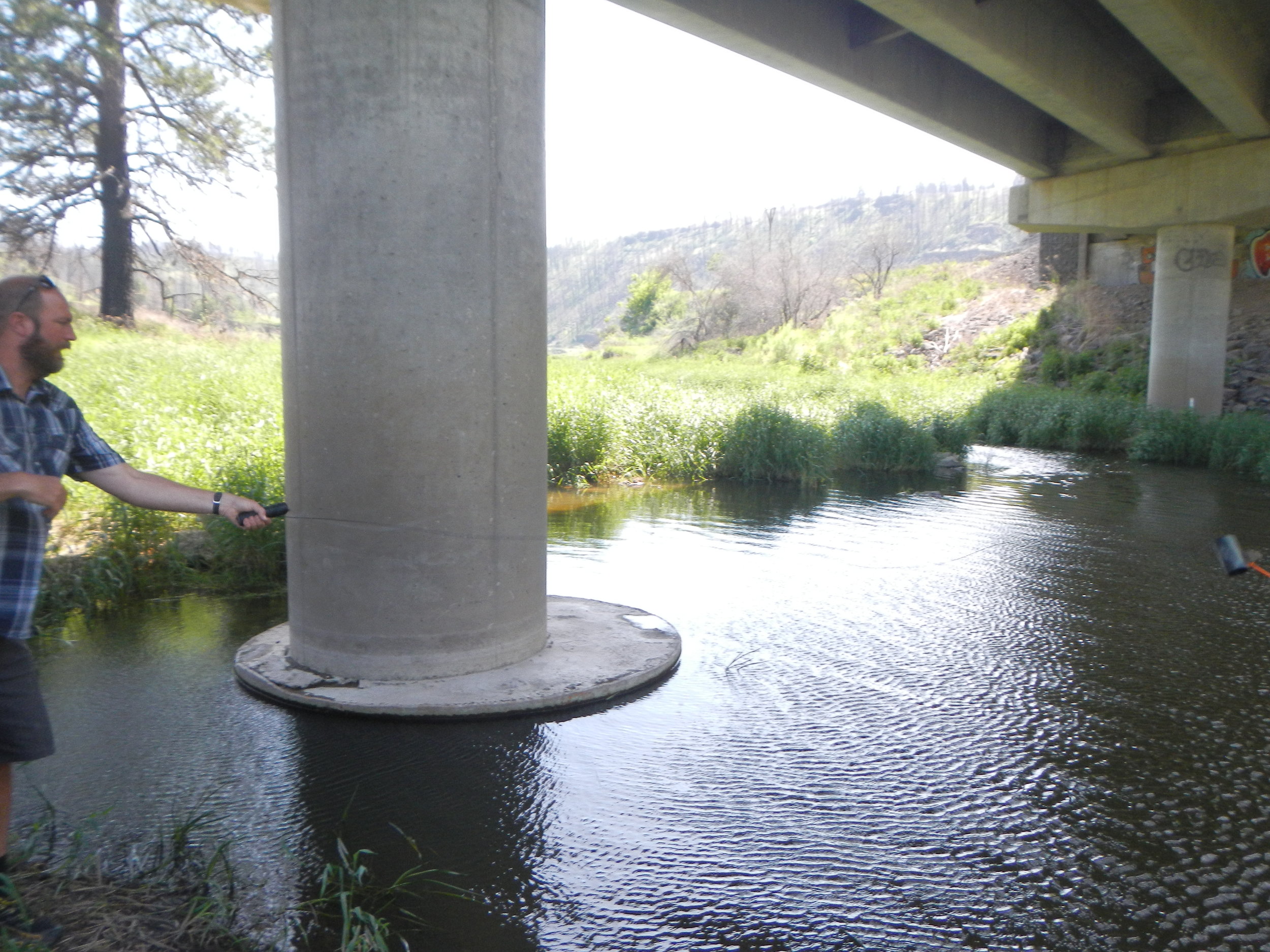Temperature data loggers look like this.
For the fifth consecutive year, Spokane Riverkeeper staff installed temperature data loggers in Hangman Creek, from just below the headwaters to its confluence with the Spokane River near Peaceful Valley.
We study temperature in Hangman Creek to document the effects of climate change on water temperatures, and so we can share water quality violations with the public and the regulators. Temperature in Hangman and in the Spokane River is a huge concern. Native fish thrive only under 64.4 degrees F.
Temperature data loggers look like this. Battery-powered, waterproof, tough, they contain temperature sensors. We program them to record temperatures at 30 minute intervals for as long as five years. Best of all, sensors can be strapped to a rock, shaded by a simple PVC pipe, and hidden in a stream for months! At the end of the summer, we retrieve them and download the temperature data to our PCs. Yesterday, we installed 9 loggers in Hangman Creek. Here is a little story about our day.
An unnamed creek near Tensed, Idaho.
We stopped at a few places to gape at the scenery. The environmental regulations in Idaho are much less stringent than in Washington. At many spots along Hangman Creek in Idaho, there are no riparian buffers at all. In most spots in Washington, there are at least little strips of grass or shrubs. We’ve viewed this difference close up on our various canoe trips down the creek.
Preparing to install a temperature logger.
At each of the selected sites, we wire the logger to the inside of a small piece of PVC pipe and weighed it down with a rock. Then we tie it to a piece of polypropylene twine, anchor the twine to a post or rock, and toss it into the water. We record the location coordinates of each site, as well as the number of the data logger into our field notebook.
The bucolic landscape along Hangman Creek.
At first glance, this scenery seems bucolic. A creek meandering through a meadow with scenic McCrosky State Park, the Palouse prairie in the distance: what’s not to like? Look closer and the scene almost makes you cry. On long stretches of the creek no vegetation is available for shade. Enormous spring Chinook once spawned here, before all the dams and before the prairie turned into the #1 wheat producing region of the world. It’s not hard to understand why water temperatures get much too warm here. Even without the dams, salmon could not survive.
There are also areas where tractors cross the creek, adding to turbidity problems, killing vegetation. A good place for a bridge, perhaps? Note the incised gully near the center top of this photo. Gullies like this will deliver a steady stream of warm water and harmful nutrients and sediment because of the absence of vegetation and shade.
Tractors and vehicles cross Hangman Creek here.
On to the next bridge, we tossed our rock-weighted contraption in and tied it down for good measure.
From Tensed to Spokane, we placed a total of 9 loggers, including several in tributaries of Hangman: Little Hangman Creek, Rock Creek, California Creek and Marshall Creek.
Stay in touch with us, and we’ll report back in the fall with our findings.
Tossing a temperature logger into Hangman Creek.







